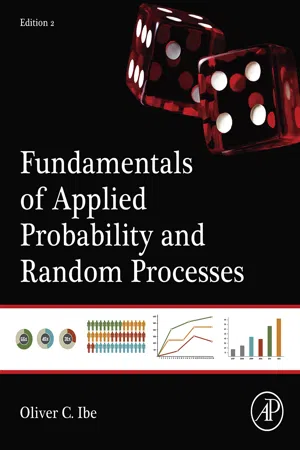
- 456 pages
- English
- ePUB (mobile friendly)
- Available on iOS & Android
Fundamentals of Applied Probability and Random Processes
About This Book
The long-awaited revision of Fundamentals of Applied Probability and Random Processes expands on the central components that made the first edition a classic. The title is based on the premise that engineers use probability as a modeling tool, and that probability can be applied to the solution of engineering problems. Engineers and students studying probability and random processes also need to analyze data, and thus need some knowledge of statistics. This book is designed to provide students with a thorough grounding in probability and stochastic processes, demonstrate their applicability to real-world problems, and introduce the basics of statistics. The book's clear writing style and homework problems make it ideal for the classroom or for self-study.
- Demonstrates concepts with more than 100 illustrations, including 2 dozen new drawings
- Expands readers' understanding of disruptive statistics in a new chapter (chapter 8)
- Provides new chapter on Introduction to Random Processes with 14 new illustrations and tables explaining key concepts.
- Includes two chapters devoted to the two branches of statistics, namely descriptive statistics (chapter 8) and inferential (or inductive) statistics (chapter 9).
Frequently asked questions
Information
Basic Probability Concepts
Abstract
1.1 Introduction
Table of contents
- Cover image
- Title page
- Table of Contents
- Copyright
- Acknowledgment
- Preface to the Second Edition
- Preface to First Edition
- Chapter 1: Basic Probability Concepts
- Chapter 2: Random Variables
- Chapter 3: Moments of Random Variables
- Chapter 4: Special Probability Distributions
- Chapter 5: Multiple Random Variables
- Chapter 6: Functions of Random Variables
- Chapter 7: Transform Methods
- Chapter 8: Introduction to Descriptive Statistics
- Chapter 9: Introduction to Inferential Statistics
- Chapter 10: Introduction to Random Processes
- Chapter 11: Linear Systems with Random Inputs
- Chapter 12: Special Random Processes
- Appendix: Table of CDF of the Standard Normal Random Variable
- Bibliography
- Index